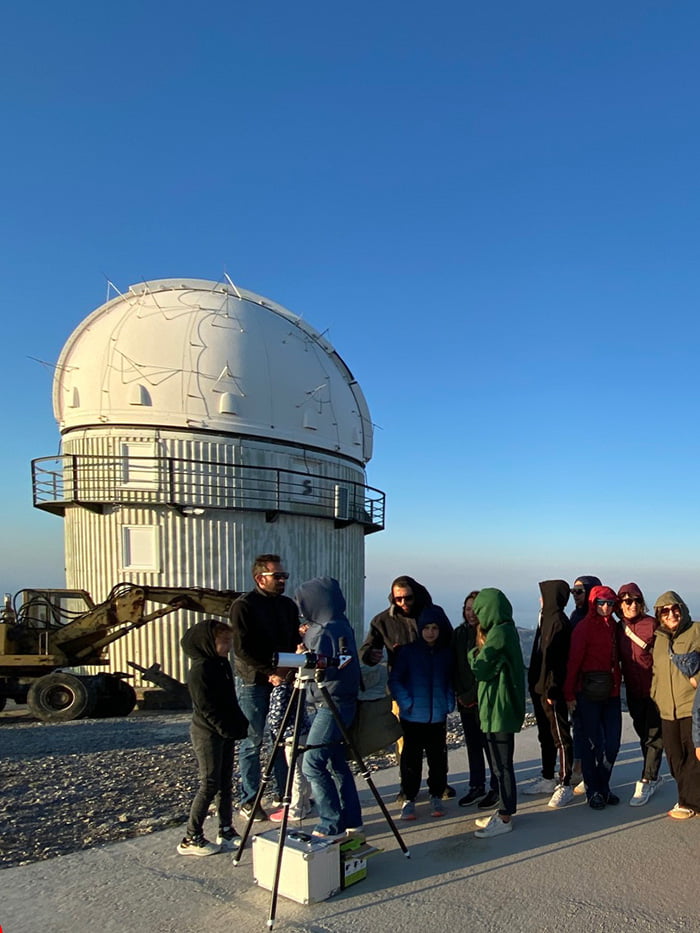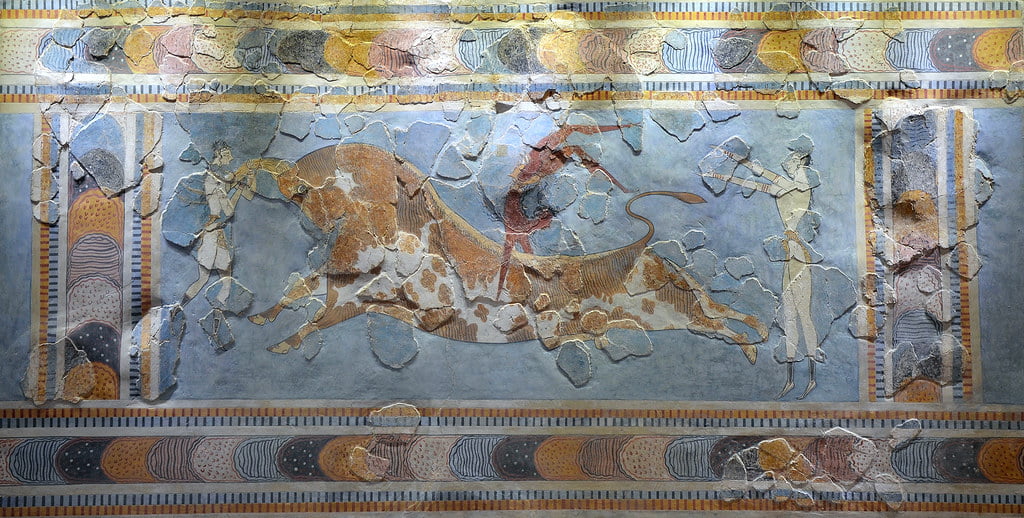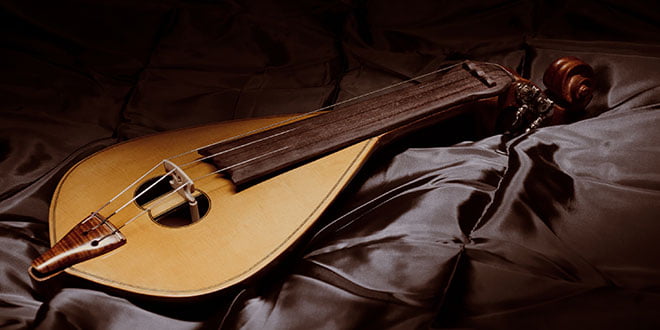Heraklion, Crete: A journey through history and culture
Located on the beautiful island of Crete, Heraklion is a vibrant city and a popular tourist destination. With its rich history, cultural significance, and stunning natural beauty, Heraklion offers visitors a captivating experience.
Table of Contents
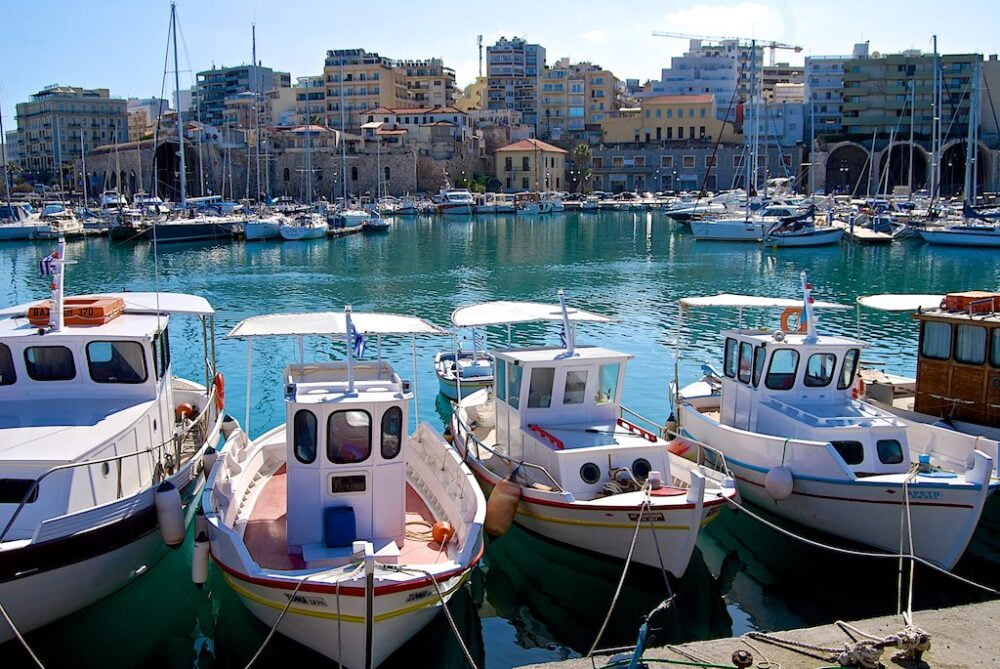
Heraklion: a captivating destination in Crete
Heraklion, the largest city and main port of Crete, is located on the north coast of the island. With a population of approximately 140,730 in 2011, it serves as a bustling hub for both locals and tourists. The city has a rich historical background, taking its name from the ancient Roman port of Heracleum.
Throughout its history, Heraklion has been known by various names, such as Candia during Venetian rule and Megalo Kastro during the Turkish occupation. Today, the city is recognized as a scientific and cultural center, contributing significantly to academic and technological advancements. The thriving tourism industry adds to the city’s appeal, attracting visitors from all over the world.
In addition to being a popular tourist destination, Heraklion is a vibrant city with a rich cultural scene. The city hosts a variety of cultural events throughout the year, including a vibrant summer cultural festival. This festival showcases a diverse range of artistic performances, including music, dance, theater, and visual arts. Visitors can immerse themselves in the city’s cultural scene and enjoy various performances, exhibitions and festivities. The fusion of scientific and cultural elements makes Heraklion a dynamic and intellectually stimulating destination.
Population and location of Heraklion
In 2011, Heraklion had a population of 140,730, while the municipality’s population reached 173,993 and the regional unit housed 305,490 residents. Its strategic location near the ancient capital of Knossos makes it an ideal base for exploring the island’s rich history and archaeological wonders.
Visitors can easily reach Heraklion by air, as it has a large airport that handles 15% of Greece’s tourist traffic. Daily ferry services to and from Piraeus (the port of Athens) provide an alternative transportation option, and the city’s status as a major transportation hub ensures convenient access by road.
Heraklion’s location on the northern coast of Crete also offers visitors the opportunity to explore the island’s stunning natural beauty. The city is surrounded by picturesque landscapes, including stunning beaches, rugged mountains and charming villages. Visitors can take a short drive from Heraklion to discover hidden gems such as the picturesque Lassithi plateau or the stunning Samaria Gorge. Crete’s diverse landscapes make it an ideal destination for outdoor activities such as hiking, swimming and exploring nature.
Another example of Heraklion’s natural beauty is the beach of Amoudara, located just a few kilometers west of the city center. This long sandy beach stretches for several kilometers and offers crystal-clear waters, making it a popular spot for sunbathing and water sports. Visitors can relax on the beach, take a refreshing swim, or try their hand at activities such as windsurfing or paddle boarding. The beach is lined with beach bars and taverns where visitors can enjoy delicious Greek cuisine while taking in the stunning coastal views.
How to get to Heraklion
Heraklion offers several transportation options for travelers:
Getting to Heraklion by plane
The city’s airport, known as Nikos Kazantzakis International Airport, serves as the main gateway to Crete. It operates flights to and from several international destinations, making it easy for visitors to get to Heraklion. Some major airlines that fly into HER include:
- Aegean Airlines
- Air France
- British Airways
- EasyJet
- Lufthansa
- Ryanair
- Transavia
Get to Heraklion by ferry from Piraeus Port
You can take a ferry from Athens (Piraeus port) to Heraklion. The journey takes around 8-10 hours, depending on the ferry. Some companies that operate ferries between Piraeus and Heraklion include:
- Minoan Lines
- ANEK Lines
- Blue Star Ferries
Ferries run multiple times a week in the high season and less frequently in the low season. You can drive your vehicle onto the ferry or walk on as a passenger.
In addition, there are daily ferry services connecting Heraklion to Piraeus, the main port of Athens. This option gives travelers the opportunity to enjoy a scenic journey by sea.
Getting to Heraklion from other cities in Crete
Crete’s well-connected road network provides convenient access from various parts of Crete. The extensive network of KTEL buses connects Heraklion with other cities and towns in Crete, allowing visitors to explore the island at their own pace. The buses are comfortable and air-conditioned, making them a convenient and affordable way to travel around Crete.
Traveling within Heraklion by bus, taxi or car
Traveling within Heraklion is also convenient, thanks to its efficient public transportation system. Visitors can easily navigate the city by bus, taxi or rental car.
- The city’s compact size makes it easy to explore on foot, with many of the major attractions within walking distance. Many sites like the Heraklion Archaeological Museum are within walking distance.
- For longer distances, you can take a taxi. There are also city buses that can take you to nearby towns like Knossos.
- Additionally, visitors can rent a car from one of the many car rental companies in Heraklion, giving them the freedom to explore the island’s hidden gems and remote villages.
Climate of Heraklion
Heraklion enjoys a pleasant Mediterranean climate with mild winters and hot summers. The city experiences average temperatures ranging from 12°C (54°F) in winter to 35°C (95°F) in summer. The region receives low to moderate rainfall, especially during the winter months.
Heraklion’s pleasant climate makes it an ideal destination for outdoor activities throughout the year, allowing visitors to explore the city’s attractions and enjoy its natural beauty.
The favorable climate of Heraklion also contributes to the agricultural productivity of the region. The fertile land surrounding the city is ideal for growing a variety of crops, including olives, grapes, and citrus fruits. Visitors can witness the abundance of agricultural produce by exploring Heraklion’s local markets, where vendors sell fresh fruits, vegetables, and other local products. The Mediterranean climate, with its warm summers and mild winters, provides the perfect conditions for these crops to thrive.
Popular Tourist Attractions
Heraklion offers a wealth of attractions that cater to a wide range of interests. For history buffs, the city is home to ancient Minoan and Venetian landmarks that showcase its significant past. The archaeological site of Knossos, with its well-preserved ruins, provides a fascinating glimpse into the Minoan civilization. This ancient palace was the center of the Minoan civilization and is believed to be the legendary labyrinth of King Minos. Visitors can explore the ruins of the palace, marvel at the intricate frescoes and colorful decorations, and learn about the fascinating history of the Minoans. The site offers guided tours and informative displays that bring the ancient civilization to life.

The Archaeological Museum of Heraklion houses a remarkable collection of artifacts, including the famous Phaistos disk. Visitors can explore the museum’s extensive exhibits and learn about the ancient history of Crete.
In addition to its historical landmarks, Heraklion is known for its vibrant and bustling city life. The city’s old town is a maze of narrow streets lined with shops, cafes and restaurants. Visitors can wander the picturesque streets and discover hidden gems such as local craft shops, traditional bakeries and charming courtyards. Lion Square, located in the heart of the old town, is a lively meeting place where locals and tourists mingle, surrounded by cafes and historic buildings.
Historical background of Heraklion
Heraklion has a rich historical background that reflects its importance throughout the ages. The city was officially renamed Heraklion in the early 20th century during the period when Crete became an autonomous state. The name Heraklion was chosen as a nod to the legendary ties between the city and Heracles, emphasizing its ancient Greek heritage.
During the Arab rule from 824 to 961 AD, it was known as “Rabdh El Khandak“, which means “Castle of the Moat”. After the Byzantine reconquest, the city was renamed “Chandax” or “Handakas“.
During the Venetian period, Heraklion was known as Candia and served as an important fortress and commercial center in the Mediterranean. The city has witnessed many historical events, including an uprising by the Greek population against Turkish occupation in 1897.
Heraklion suffered heavy damage during World War II, but managed to recover and become a prominent commercial and tourist center. Today, it stands as a testament to its resilient spirit and remarkable history.
One example of Heraklion’s historical significance is the Venetian Walls that once surrounded the city. These massive fortifications were built by the Venetians during their rule of Crete and served as a defensive barrier against invaders. The walls are an architectural marvel with bastions, gates and ramparts. Visitors can walk along the walls and enjoy panoramic views of the city and surrounding countryside. The Venetian Walls are a tangible reminder of Heraklion’s turbulent past and its strategic importance throughout history.
Sightseeing in Heraklion
Heraklion offers a plethora of must-see sights that showcase its rich heritage. The old Venetian harbor with its iconic fortress, Koules, is a popular attraction that offers stunning views of the city. Visitors can explore the fortress and learn about its history as a defensive structure during the Venetian period.
The Lions Fountain, located in the central square, is another notable sight in Heraklion. This fountain, adorned with lion sculptures, is a symbol of the city and a popular meeting place for locals and tourists.
Popular Tourist Attractions
Showcasing Cretan history and folklore spanning from the Byzantine period to the 20th century, the Historical Museum of Crete the museum not only offers a wealth of artifacts but also a glimpse into the architectural beauty of a bygone era. A visit to this museum is a journey through time, unveiling the layers of culture, conflict, and artistry that have shaped Crete.

25 August Street is Heraklion’s primary pedestrian shopping boulevard commemorating the date in 1898 when Crete was freed from Ottoman dominance.
In addition to the historical landmarks, Heraklion is home to several beautiful churches that are well worth a visit. Agios Titos has a church in the city named after him. The church features beautiful Byzantine and Venetian architecture and is an important religious site for locals.
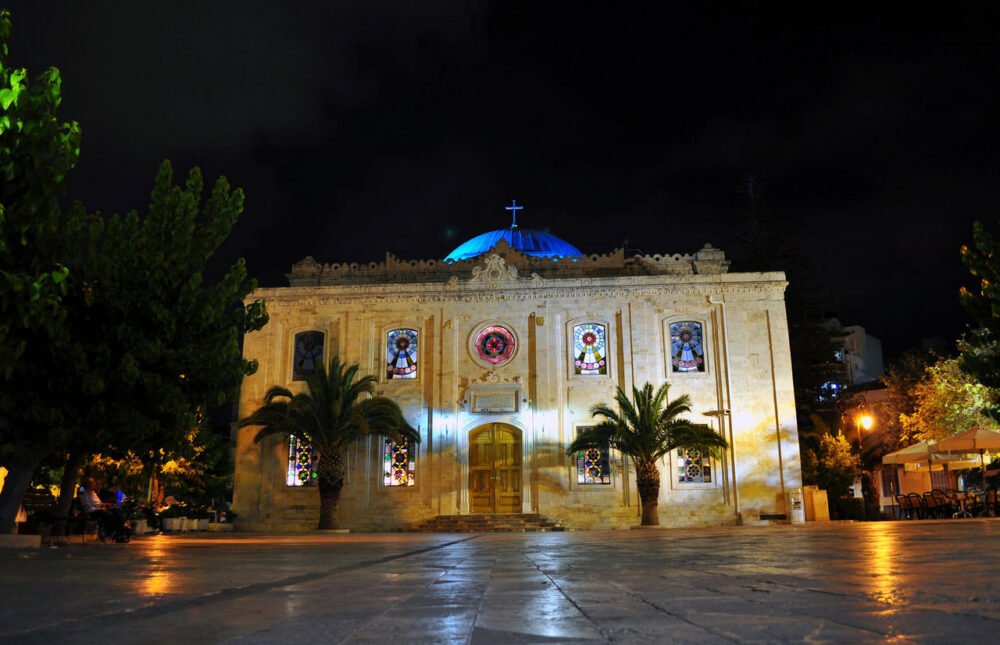
Agia Ekaterini is another notable church in Heraklion, known for its stunning frescoes and icons. These churches offer a glimpse into the city’s religious heritage and are architectural gems in their own right.
In addition, Heraklion is a city full of hidden gems waiting to be discovered. Visitors can explore the narrow streets of the historic center, where traditional houses and Venetian buildings coexist. The neighborhood’s charming atmosphere and quaint cafes create a peaceful and nostalgic ambiance.
Another hidden gem is the Church of St. Mark, located near the Lions fountain. This small church features beautiful frescoes and a peaceful courtyard, providing a tranquil escape from the bustling city streets.
Heraklion as a Scientific and Cultural Center
Heraklion has made remarkable progress in the academic and technological fields, positioning itself as a scientific center in Greece. The city is home to several educational institutions and research centers that contribute to the advancement of various disciplines. The University of Crete, located near Heraklion, is one of the leading research universities in Greece, attracting students and scholars from all over the world. The city’s scientific community is actively engaged in research and innovation, making significant contributions to fields such as archaeology, biology and computer science.
In recent years, Heraklion has also witnessed developments in the technology industry, contributing to its economic growth. The city has become a hub for start-ups and innovative businesses with a focus on technology and entrepreneurship. The Technological Park of Crete, located in Heraklion, provides a collaborative environment for research and development, fostering innovation and attracting both local and international companies. These developments have created employment opportunities and contributed to the economic diversification of the city.
Heraklion’s scientific and cultural importance is exemplified by the Natural History Museum of Crete. Located in Heraklion, this museum is dedicated to the flora, fauna and geology of Crete. It features interactive exhibits, informational displays, and a planetarium, providing visitors with a deeper understanding of the island’s natural environment. The museum also conducts research and conservation efforts, helping to protect Crete’s unique biodiversity.
In addition to its scientific achievements, Heraklion is a vibrant cultural center. The city hosts a variety of cultural events throughout the year, from music concerts to art exhibitions. The Summer Cultural Festival is a highlight of the city’s cultural calendar, attracting artists and performers from Greece and abroad. The festival showcases a wide range of artistic disciplines, including music, dance, theatre and visual arts. Visitors can immerse themselves in the city’s cultural scene and experience the rich traditions and creativity of the region.

In addition to the summer cultural festival, Heraklion hosts several other events throughout the year. The Carnival of Heraklion is a colorful celebration held in February with parades, costume contests and street parties. This vibrant event attracts visitors from all over the world who come to experience the festive atmosphere and join in the fun.
Other notable events in Heraklion include the Wine Festival, the Cretan Diet Festival and the International Film Festival, which showcase the region’s culinary delights, traditional customs and cinematic talent. These festivals and events offer visitors a unique opportunity to immerse themselves in the local culture and create lasting memories.
Development and economy of Heraklion
Over the years, Heraklion’s economy has developed with a strong focus on tourism. The city’s thriving tourism industry plays a vital role in its economic growth, attracting visitors with its historical sites, natural beauty, and entertainment options. Heraklion’s extensive visitor facilities, including hotels, travel agencies and car rental companies, ensure that tourists have a comfortable and enjoyable stay.
Heraklion’s main exports include grapes, olives and olive oil, wine, carobs, citrus fruits, almonds and vegetables. These agricultural products contribute to the local economy and showcase the region’s fertile land.
Tourism in Heraklion
Tourism plays a vital role in Heraklion’s economy, attracting visitors with its historical sites, natural beauty and entertainment options. The city offers a unique blend of ancient and modern attractions, making it a captivating destination for travelers. Whether exploring the archaeological wonders of Knossos, strolling through the charming streets of the Old Town, or enjoying the vibrant nightlife, visitors to Heraklion are sure to find something to suit their interests. The city’s warm hospitality, delicious cuisine and stunning coastal scenery further enhance the tourist experience. Heraklion truly offers a memorable and enriching journey for those who wish to explore the beauty of Crete.
Heraklion’s tourism industry continues to evolve and adapt to the changing needs and preferences of travelers. The city is known for its commitment to sustainable tourism practices, promoting responsible travel and environmental conservation. Visitors can engage in a variety of eco-friendly activities, such as hiking in nature reserves, participating in beach clean-ups or supporting local farmers’ markets. These initiatives not only enhance the visitor experience, but also contribute to the preservation of Heraklion’s natural and cultural heritage.
Explore the beauty of Heraklion, Crete
Heraklion, Crete, is a destination rich in history, cultural significance and natural beauty. Whether you are a history buff, a lover of art and culture, or simply looking for a relaxing beach getaway, Heraklion has something to offer. With its vibrant atmosphere, welcoming locals and awe-inspiring attractions, Heraklion is sure to leave a lasting impression on every visitor.
When planning your visit to Heraklion, be sure to explore the city’s hidden gems, such as the center of the city and the Church of Agios Titos (Saint Titus). Take time to savor the flavors of Crete by visiting local markets and sampling traditional dishes. Immerse yourself in the city’s cultural scene by attending a performance at the Heraklion Summer Arts Festival or exploring the Natural History Museum of Crete. And don’t forget to relax and unwind on the beautiful beaches that surround the city, such as the popular Amoudara Beach.

Whether you’re drawn to history, culture, nature, or simply the warm hospitality of the locals, Heraklion has something for everyone. So pack your bags and get ready for an unforgettable trip to the enchanting city of Heraklion, Crete.
- The Island of Crete
- Heraklion
- Rethymno in Crete
- Chania
- Agios Nikolaos
- The Music of Crete
- Myths of Crete
- Bull Leaping in Minoan Crete
- Gortys, the Roman Capital of Crete
- Chrissi Island in Crete
- Eleftherios Venizelos
- Zorba the Greek
- Wind and Solar Energy in Crete
- Skinakas Observatory
- Rock Climbing in Crete
- A Farmer in Elounda
- The Allure of Crete’s 5 S’s


